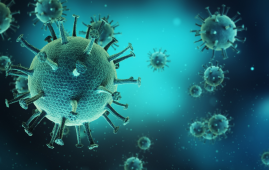

Researchers evaluated relationships between children’s prescriptions for first-generation antihistamine medications and seizures in a recent study that was published in JAMA Network Open.
Background:
First developed as antipsychotics and tranquilizers, generation 1 antihistamines are currently used to treat common cold symptoms and lessen children’s itchy feelings.
The blood-brain barrier is permeable to certain medications (BBB). Because of their poor selectivity and propensity to alter brain wave activity, especially in young children under two, their use has decreased.
First-generation antihistamines have been shown to affect electroencephalographic activity and seizure thresholds in addition to causing symptomatic seizures in adults. Rats that are exposed to generation 1 antihistamines are more likely to experience seizures, and animal models with genetic manipulations provide evidence of a connection to epileptic seizures.
Antihistamines have been found to be a common cause of acute symptomatic seizures in clinical settings; children who have had febrile seizures and have taken antihistamines have been found to have altered seizure patterns. In clinical practice, generation 1 antihistamines’ impact on brain waves and their increased sensitivity in vulnerable age groups have received less attention.
About the Study
Researchers examined whether children’s risk of seizures is increased by the acute prescription of generation 1 antihistamines in the current retrospective cohort analysis.
The National Health Insurance Service (NHIS) database in Korea provided data for the study’s analysis. Children who visited emergency rooms because they were having seizures and whose birth dates fell between January 1, 2002, and December 31, 2005, were the participants.
Children without birth certificates, those having seizures before the age of six months, and those not prescribed first-generation antihistamines prior to the seizure episode were among the exclusion criteria.
Using classifications from the International Classification of Diseases, Tenth Revision (ICD-10), the researchers were able to diagnose seizures. They finished the follow-up on December 31, 2019, and they examined the data from June 3, 2023, to January 30, 2024. Their controls in this case-crossover study were children.
First-generation antihistamine prescriptions served as the study’s exposure. The principal result consisted of a seizure episode, with the date of occurrence serving as the index date.
Adjusted odds ratios (AOR) for seizures were calculated using multivariate conditional logistic regression models, which also included adjustments for perinatal circumstances, age, gender, economic status, place of residence, and index date season.
The models contrasted two control periods—one from 31 to 45 days before the seizure incidence, and the other from 61 to 75 days before the event—with generation 1 antihistamine prescriptions 15 days before the index date (hazardous period).
Analyses using stratified subgroups assessed the correlation with participant attributes. Researchers employed time frames of five and ten days, compared control points from the same period a year earlier, assessed prescriptions for singe-formulation generation 1 antihistamines, and eliminated patients who were utilizing medication combinations in their sensitivity analysis.
Acute clinical conditions such sinusitis, pharyngitis, nasopharyngitis, tonsillitis, purulent otitis media, asthma, upper respiratory tract infections, bronchitis, and bronchiolitis were also taken into account.
In summary
The study discovered that children, especially those between the ages of six months and two years, had a 22% higher risk of seizures when prescribed first-generation antihistamines were taken.
The results highlight how crucial it is for young children to use generation 1 antihistamine medications with caution and wisdom. The association between the prescription of antihistamine medications and the likelihood of having seizures requires more research.
For more information: First-Generation Antihistamines and Seizures in Young Children, JAMA Netw Open, doi: 10.1001/jamanetworkopen.2024.29654
more recommended stories
 36-Week Pre-eclampsia Screening May Reduce Term Risk
36-Week Pre-eclampsia Screening May Reduce Term RiskA New Preventive Strategy for Term.
 Cardiovascular Risk and Sudden Cardiac Death in Diabetes
Cardiovascular Risk and Sudden Cardiac Death in DiabetesRising Sudden Cardiac Death (SCD) Risk.
 Engineered Herpes Virus for Glioblastoma Immunotherapy
Engineered Herpes Virus for Glioblastoma ImmunotherapyA Powerful New Direction in Glioblastoma.
 Poor Kidney Function and Alzheimer’s Biomarkers Explained
Poor Kidney Function and Alzheimer’s Biomarkers ExplainedPoor kidney function may influence levels.
 Walking Speed Before Hip Replacement Predicts Recovery
Walking Speed Before Hip Replacement Predicts RecoveryNew Evidence Points to a Simple,.
 Neuroblastoma Drug Combo Extends Survival in Models
Neuroblastoma Drug Combo Extends Survival in ModelsA Promising Shift in High-Risk Neuroblastoma.
 How Soybean Oil Impacts Weight Gain and Metabolism
How Soybean Oil Impacts Weight Gain and MetabolismWhy Soybean Oil May Affect Metabolism.
 Coffee and Cognitive Function: Evidence Review
Coffee and Cognitive Function: Evidence ReviewA new narrative review in Cureus.
 Colorectal Cancer Screening Rates Low in Adults 45–49
Colorectal Cancer Screening Rates Low in Adults 45–49Recent UCLA research reveals that colorectal.
 Gut Immune Cells and Long-Lasting Antiviral Protection.
Gut Immune Cells and Long-Lasting Antiviral Protection.Breakthrough Findings on How Gut Immune.

Leave a Comment